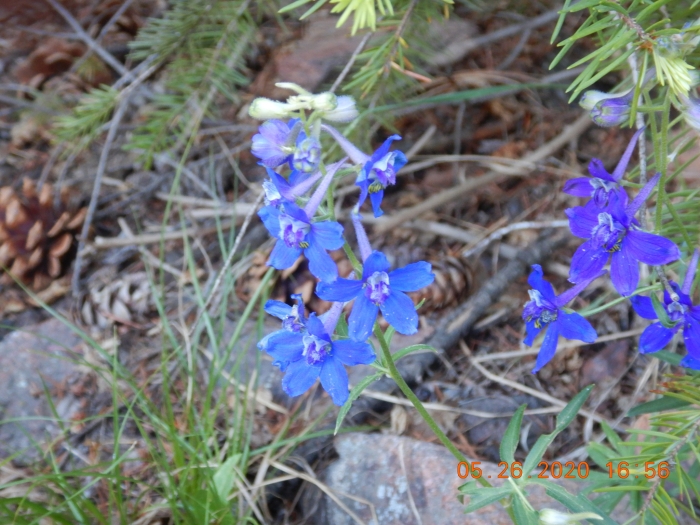Twolobe Larkspur
(Delphinium nuttallianum)
Twolobe Larkspur (Delphinium nuttallianum)
/
/

Parker Hopkins
Public Domain
Image By:
Parker Hopkins
Recorded By:
Copyright:
Public Domain
Copyright Notice:
Photo by: Parker Hopkins | License Type: Public Domain | License URL: http://creativecommons.org/publicdomain/zero/1.0/ | Rights Holder: Parker Hopkins | Publisher: iNaturalist | Date Created: 2020-05-26T16:56:13-07:00 |

















































Estimated Native Range
Summary
Delphinium nuttallianum, commonly known as Twolobe Larkspur, is a perennial herb that is deciduous or semi-deciduous. It is native to open woodlands, grassy slopes, and alpine meadows in the Western United States, particularly in the Pacific Northwest. This plant typically grows to a modest size of 0.3-1 feet (0.09-0.3 meters) in both height and width, forming a compact clump. Twolobe Larkspur is characterized by its erect, white to pink stems that may branch several times and are often hairy in the upper portion. It produces striking blue and purple flowers in the spring and summer, which are borne on long pedicels in a loose inflorescence at the stem’s apex. The flowers are showy and attract pollinators such as bees and butterflies.
In cultivation, Twolobe Larkspur is valued for its vibrant floral display and its ability to thrive with minimal care. It is often used in rock gardens, native plant gardens, and as a border plant. This larkspur prefers full sun but can tolerate partial shade, requires low amounts of water, and does best in well-drained soils. While it is not commonly affected by diseases, it can be susceptible to crown rot if grown in poorly drained soils. Gardeners should be aware that all parts of the plant are toxic if ingested. Twolobe Larkspur is not known for being invasive outside its native range, but care should be taken to prevent its spread in non-native areas.CC BY-SA 4.0
In cultivation, Twolobe Larkspur is valued for its vibrant floral display and its ability to thrive with minimal care. It is often used in rock gardens, native plant gardens, and as a border plant. This larkspur prefers full sun but can tolerate partial shade, requires low amounts of water, and does best in well-drained soils. While it is not commonly affected by diseases, it can be susceptible to crown rot if grown in poorly drained soils. Gardeners should be aware that all parts of the plant are toxic if ingested. Twolobe Larkspur is not known for being invasive outside its native range, but care should be taken to prevent its spread in non-native areas.CC BY-SA 4.0
Plant Description
- Plant Type: Herb
- Height: 0.3-1 feet
- Width: 0.3-1 feet
- Growth Rate: Moderate
- Flower Color: Blue, Purple
- Flowering Season: Spring, Summer
- Leaf Retention: Deciduous
Growth Requirements
- Sun: Full Sun, Part Shade
- Water: Low
- Drainage: Fast
Common Uses
Bee Garden, Bird Garden, Butterfly Garden, Deer Resistant, Hummingbird Garden, Low Maintenance, Rabbit Resistant, Showy Flowers
Natural Habitat
Native to open woodlands, grassy slopes, and alpine meadows in the Western United States, particularly in the Pacific Northwest
Other Names
Common Names: Nuttall’s Larkspur, Common Larkspur, Dwarf Larkspur, Meadow Larkspur
Scientific Names: , Delphinium nuttallianum, Delphinium nelsonii, Delphinium nuttallianum var. nuttallianum, Delphinium nuttallianum var. fulvum, Delphinium sonnei, Delphinium menziesii var. utahense, Delphinium pinetorum, Delphinium dumetorum, Delphinium pauciflorum
GBIF Accepted Name: Delphinium nuttallianum Pritz. ex Walp.